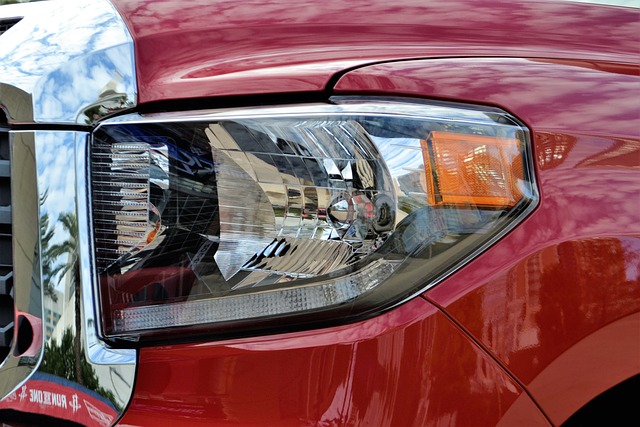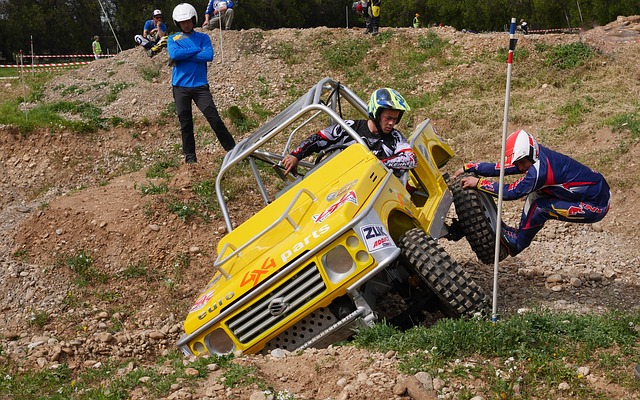Recovery straps are crucial for RGV-4×4 repairs, offering high-strength solutions for towing and lifting off-road vehicles in tough conditions. Crafted from durable materials, these tools provide exceptional grip and load distribution, facilitating safe extraction without damage during emergencies or challenging terrains like mud, sand, and rocks. Essential for off-road enthusiasts, they enhance safety, prevent costly vehicle damage, and require proper maintenance to ensure effective use according to manufacturer guidelines.
In today’s digital era, off-road adventures have gained immense popularity. For those traversing challenging terrains with their RGV-4×4, understanding essential repair tools like recovery straps is crucial. This article delves into the world of RGV-4×4 repair, explaining what recovery straps are and why they’re vital for off-road vehicles. We’ll guide you through choosing the right strap, maintaining them for optimal performance, and ensuring safety during repairs, making your off-road experience smoother and more secure.
- Understanding RGV-4×4 Repair: What Are Recovery Straps?
- Why Are Recovery Straps Essential for Off-Road Vehicles?
- How to Choose the Right Recovery Strap for Your RGV-4×4
- Maintenance and Safety Tips for Effective RGV-4×4 Repair using Recovery Straps
Understanding RGV-4×4 Repair: What Are Recovery Straps?

Recovery straps, a critical component in RGV-4×4 repairs, are robust and versatile tools designed to facilitate towing and lifting operations for off-road vehicles. These specialized pieces of equipment are crafted from high-strength materials, ensuring they can withstand the rigors of extreme terrain and challenging conditions. By offering exceptional grip and load-bearing capacity, recovery straps become indispensable during emergency situations or when navigating tough trails.
In the context of RGV-4×4 repairs, understanding the purpose and functionality of these straps is essential. They provide a secure means to connect towing vehicles to stranded ones, enabling safe extraction without causing further damage. With their ability to distribute weight evenly and absorb shock, recovery straps play a pivotal role in minimizing stress on both the vehicle being towed and the towing machine during rescue operations.
Why Are Recovery Straps Essential for Off-Road Vehicles?

Recovery straps are an indispensable tool for off-road enthusiasts and those who frequently navigate challenging terrains with their vehicles. Their primary purpose is to provide a secure and reliable means of extracting or towing a vehicle stuck in difficult situations, such as mud, sand, or rocky terrain. Off-road adventures often lead to unexpected obstacles, and having robust recovery straps on hand can make all the difference in safely rescuing both the vehicle and its occupants.
For RGV 4×4 repair and rescue missions, these straps offer immense benefits. They are designed to withstand extreme stress and strain, ensuring they remain intact even under harsh conditions. The versatility of recovery straps allows them to be attached to various points on a vehicle, enabling effective towing or pulling in multiple scenarios. Whether it’s a flat tire, getting unstuck from mud, or assisting another stranded driver, having well-maintained recovery straps can significantly enhance off-road safety and prevent costly damage to vehicles.
How to Choose the Right Recovery Strap for Your RGV-4×4

When selecting a recovery strap for your RGV-4×4, it’s crucial to consider factors like vehicle weight and intended use. These straps come in various strengths, typically measured in pounds or kilograms per inch (KPI). For RGV-4×4 repairs, opt for high-quality, heavy-duty straps designed for off-road recovery, as they can handle the rigors of rugged terrain and your vehicle’s substantial weight.
Ensure the strap has an appropriate breaking strength far exceeding your RGV-4×4’s load capacity. Check the manufacturer’s specifications for recommended usage and always follow safety guidelines. Look for durable materials like high-tenacity nylon or polyester, which offer superior strength-to-weight ratios. Additionally, consider the length required to reach and secure your vehicle effectively in different recovery scenarios.
Maintenance and Safety Tips for Effective RGV-4×4 Repair using Recovery Straps

Proper maintenance and safety practices are essential for effective RGV-4×4 repair using recovery straps. Before attempting any RGV-4×4 repair, ensure all components are in good working condition, including the straps themselves. Regularly inspect your recovery straps for signs of wear and tear, such as frayed edges or weakened material. Replace any damaged straps immediately to prevent accidents during a tow or recovery operation.
When using recovery straps, prioritize safety by following manufacturer guidelines and industry standards. Ensure proper tension on the straps during the RGV-4×4 repair process. Over-tightening can cause damage to both the vehicle and the straps, while under-tensioning may lead to unsuccessful recovery. Always use suitable anchor points for a secure connection, and never attempt to tow or recover without proper fastenings in place.
Recovery straps are indispensable tools for off-road enthusiasts, offering a reliable solution during challenging terrains. When it comes to RGV-4×4 repair, understanding the importance of these versatile straps is key. By choosing the right fit and maintaining them properly, you can enhance your vehicle’s capabilities and ensure safety while navigating rough landscapes. Incorporating recovery strap maintenance into your routine RGV-4×4 repair regimen will prove invaluable for any adventurous soul tackling off-road trails.
